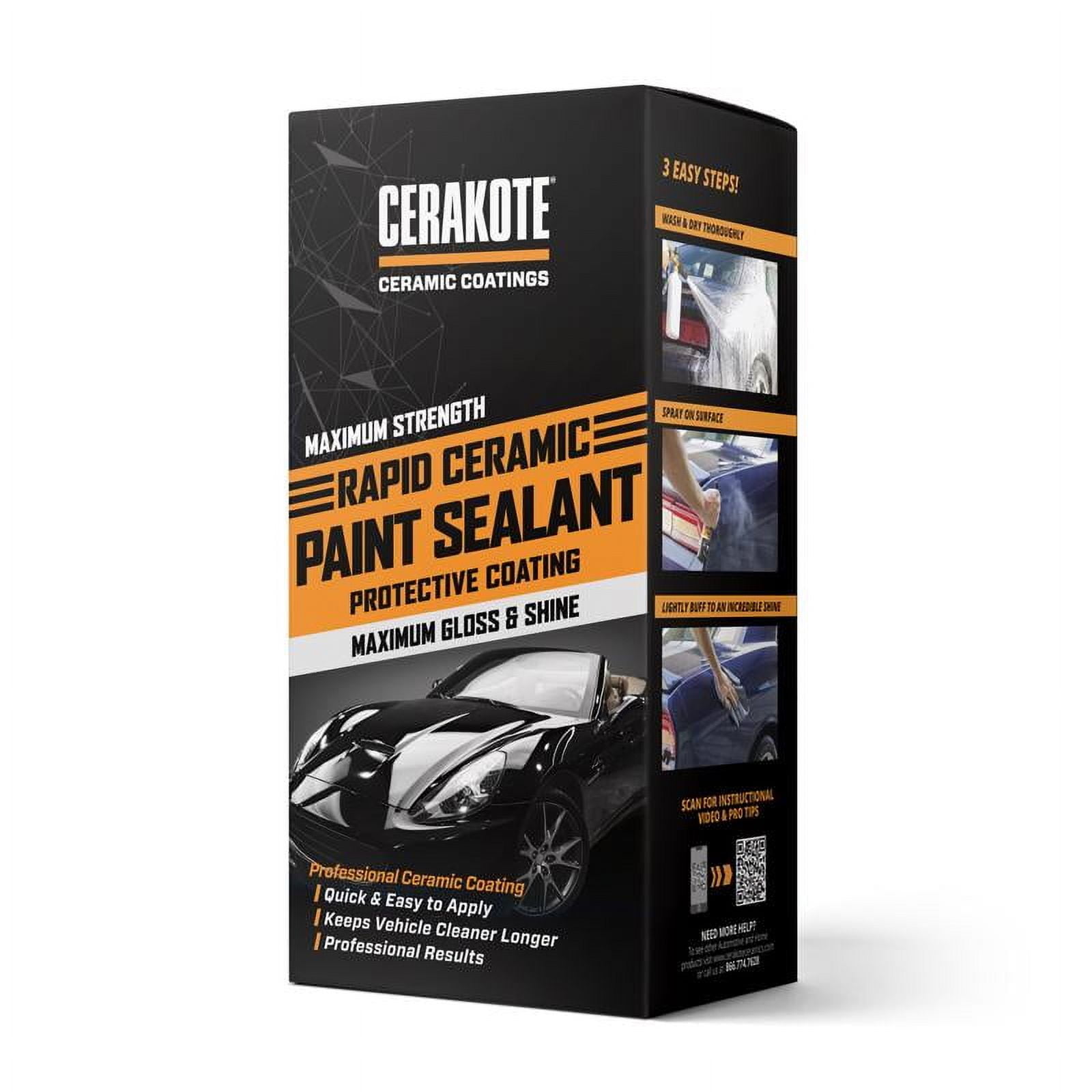Why Ceramic Layer Is the Ultimate Service for a Perfect End Up
Ceramic coating has actually arised as a leading service for those looking for a flawless coating for their vehicles, thanks to its impressive toughness and protective attributes. What elements truly established ceramic coating apart?
What Is Ceramic Layer?

When used properly, ceramic finishing develops a hydrophobic surface that wards off water and dirt, making it simpler to clean up and keep. Unlike typical waxes or sealants, which commonly supply short-term security, ceramic finishings can last for numerous years, depending on the item quality and application method. The procedure of using ceramic finishing calls for precise prep work, including extensive cleaning and occasionally paint improvement, to make certain optimal bonding and effectiveness.
Ceramic layers are not limited to automobile surfaces; they can likewise be used on different materials, consisting of glass, steel, and plastics, giving a functional service for boosting security. In general, ceramic covering represents a significant development in surface security modern technology, combining both useful and visual benefits for a wide variety of applications.
Benefits of Ceramic Layer
While lots of surface defense options exist, the benefits of ceramic finishing stand out because of its special properties and durable efficiency. One of the primary advantages is its outstanding sturdiness. Ceramic Coating Philadelphia. Unlike standard wax or sealants that call for constant reapplication, ceramic finishes provide a resilient layer that can last for several years, significantly minimizing maintenance efforts
Another notable advantage is improved defense versus environmental impurities. Ceramic finishes develop a hydrophobic surface that pushes back water, dirt, and different pollutants, making it simpler to clean. This feature not just preserves the car's appearance however also lessens the danger of corrosion and oxidation, especially in severe weather.
In addition, ceramic layers offer superior resistance to UV rays, avoiding fading and deterioration of paint in time. This UV security is crucial for keeping the aesthetic value of lorries and surface areas revealed to guide sunlight.
Furthermore, the glossy coating accomplished with ceramic covering boosts the total aesthetic appeal, giving surfaces a showroom-quality sparkle. Generally, ceramic finishes stand for a substantial development in surface area protection technology, offering enduring benefits that satisfy both useful and visual demands.
Just How It Functions
Comprehending the scientific research behind ceramic coatings reveals just how they give such impressive defense and longevity. At its core, a ceramic coating is a fluid polymer that chemically bonds with the lorry's manufacturing facility paint. This bonding develops a safety layer that is both oleophobic and hydrophobic, repelling water, dirt, and oil. The key part of a lot of ceramic layers is silicon dioxide (SiO2), which is obtained from quartz. This substance contributes about his to the coating's solidity and resistance to scratches, UV rays, and environmental impurities.
The application process includes numerous steps, including surface prep work, which is important to attaining optimal attachment. Once applied, the coating goes through a healing process, during which it solidifies and forms a semi-permanent bond with the paint surface. This bond is what identifies ceramic coverings from typical waxes and sealants, offering a longer-lasting safety obstacle that can endure for years.
In addition, the thickness of the coating can improve its safety site qualities, making certain that it can endure extreme problems. Inevitably, the science of ceramic finishings integrates innovative products with ingenious application techniques to provide an unmatched degree of security and aesthetic improvement for vehicles.
Comparison With Traditional Techniques
When contrasted to traditional paint protection approaches such as waxes and sealers,The benefits of ceramic finishings end up being especially obvious. While waxes use a short-term sparkle, typically lasting a couple of weeks to a pair of months, ceramic coatings provide a long-lasting safety layer that can withstand for several years. This toughness substantially minimizes the frequency of reapplication, making ceramic coverings a more cost-effective remedy with time.
Furthermore, traditional methods often need comprehensive prep work and multiple applications to attain an adequate degree of protection. On the other hand, ceramic finishings bond at a molecular level with the vehicle's surface, creating a robust guard against ecological contaminants like UV rays, acid rainfall, and road salts. This bond enhances the lorry's resistance to scrapes and swirl marks, which prevail with typical waxes and sealants.
Moreover, the hydrophobic residential properties of ceramic finishes ward off water and dirt, bring about easier cleaning and maintenance. On the other hand, wax and sealant-treated surface areas can attract gunk, requiring even more frequent cleaning - Ceramic Coating Philadelphia. Overall, ceramic finishes not only supply remarkable security yet also provide a more visually appealing and long-lasting coating, establishing them as the preferred selection for critical vehicle owners
Application and Maintenance Tips

Making use of a foam applicator, apply the finishing in little sections, complying with the supplier's standards regarding thickness and overlap. Allow sufficient healing time in between coats, usually 24 hours, to make sure proper bonding. After application, it is crucial to stay clear view website of exposure to water or extreme components for at least a week to enable the finish to totally cure.
Furthermore, making use of a ceramic upkeep spray can boost the coating's hydrophobic homes and durability. Normal examinations for any kind of signs of wear will assist maintain the layer's stability and maintain that immaculate coating.
Conclusion
In conclusion, ceramic finishing arises as an exceptional option for achieving a remarkable automotive coating. By forming a durable bond with manufacturing facility paint, ceramic coating successfully shields against scrapes, UV rays, and ecological pollutants.
